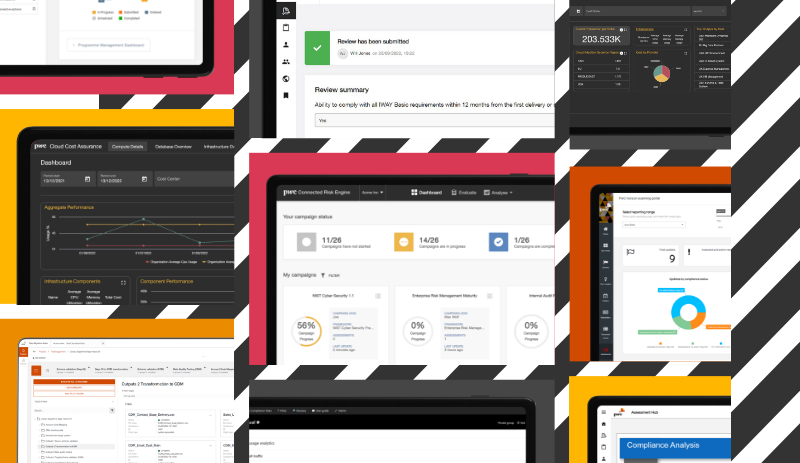{{item.title}}
{{item.text}}

Download PDF - {{item.damSize}}
{{item.text}}
From detection and protection to response and recovery, stay ahead of cyber risk and build the resilience to take on change with confidence. Put cyber security at the heart of how you transform.
Driven by constant disruption and ever-changing risk, tech-driven transformation is now a perpetual business-as-usual state for organisations instead of a one-time hit. Putting cyber security at the heart of this essential change and reinvention is critical to gaining trust, protecting your organisation’s reputation and building the resilience to protect and create value.
Transformation and cyber security are inextricably linked, whether you’re digitising supply chains, building cloud-based business models or developing responsible and secure ways to innovate with generative AI. Your reliance on technology – its complex interdependencies and the cyber security risk it brings – means the impact of a cyber attack can be rapid and significant.
Keeping your employees and customers safe, and protecting your organisation’s prized information and assets, means staying ahead of cyber security risk, not just responding to it.
Through our deep technical cyber security expertise and breadth of business knowledge, combined with our powerful technology alliances, we help organisations across all industries embrace this change with confidence. From strategy to delivery to incident response and recovery, we can help you stay ahead of cyber security threats to protect value and unlock new opportunities to accelerate growth.
“As the way we live, work and connect with each other is increasingly digital first, cyber security must be embedded at the heart of everything we do. Only by working together to stay ahead of complex cyber risk can we protect and strengthen the values on which our society is built.”
Alex Petsopoulos,
Partner, Cyber Security, PwC UK
We’re at your side, working with you to safeguard customers’ data, your organisation, people and reputation. For cyber security that addresses today’s risks and provides a resilient foundation for growth, we have the technical knowledge and hands-on operational support you need.
Reduce risk, improve operational resilience and embrace transformation confidently with the right cyber security strategy. In a changing risk and regulatory landscape, we can help you shape and validate your strategy, advise leaders on cyber risk and demonstrate how cyber security can be a strategic enabler for your organisation’s purpose and growth ambitions.
Improve your operational capability and resilience by turning your cyber security strategy into a roadmap to enhance your systems and processes, testing and fine tuning your defences. Our cyber security solutions and expertise enable you to detect evolving cyber security threats, remediate weaknesses, provide real-time decision-making, and protect assets and sensitive data.
Respond to, prepare for and recover from cyber security incidents with confidence. From forensic and on-demand technical response teams to legal and communications expertise, we can help you uncover an incident’s cause, identify lessons learned and support you in rebuild and recovery. In the heat of an incident, we’re by your side.
Stay ahead of complex and ever-evolving cyber security threats with us as your trusted cyber security business partner. Leave us to protect your sensitive data, provide reporting and advise leaders on risk by managing your cyber security defences for you, so you can focus on your organisation’s strategic agenda.
Today’s world is fast-moving, uncertain and unpredictable. Our digital products have been built to help better understand and navigate your business issues so that you can adapt and grow in the face of disruption.
Named a Leader in the IDC MarketScape: Worldwide Systems Integrators/Consultancies for Cybersecurity
Named as a Leader in the IDC MarketScape: Worldwide Cyber Security Risk Management Services 2023 Vendor Assessment
Identified as a Pacesetter in the ALM Intelligence Pacesetter Research, Cyber Security Consulting 2022
We’re empowering our clients to meet the demands of digital society through high trust cyber security services. By combining our expertise with our Alliance partners' technology most suited to their needs, we’re helping organisations solve their most critical business issues securely and embrace change with confidence.

Cyber Security Partner and Cyber Business Leader, PwC United Kingdom
Tel: +44 (0)7808 028337






